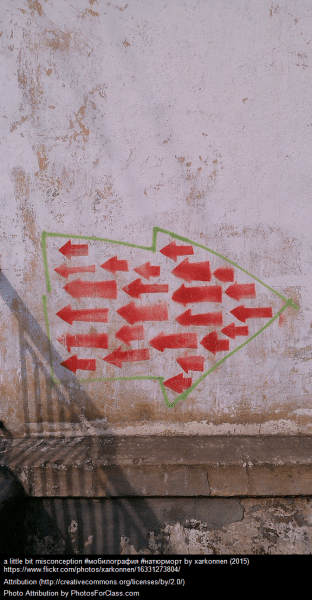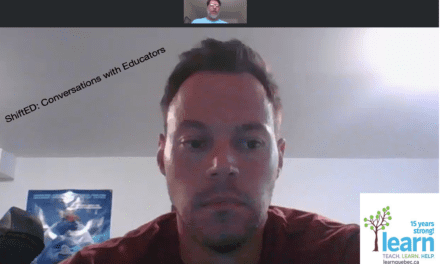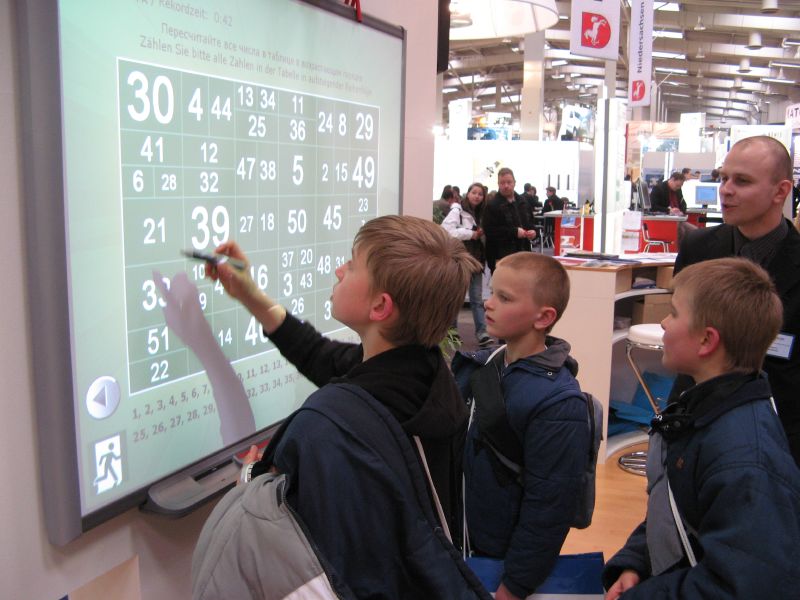 We’ve all heard or expressed the common teacher refrain or some variation of “I taught it to them so many times and in so many different ways and yet they still got it wrong on the exam!” It’s frustrating and hard to comprehend how something which may have been thoroughly and skillfully taught, and by all indications well understood by the students, just doesn’t take hold. Perhaps what is happening is that we are trying to teach something that contradicts the students’ existing erroneous conceptions on the subject. Unfortunately such existing misconceptions have more “sticking” power and often remain as the student’s dominant explanation.
We’ve all heard or expressed the common teacher refrain or some variation of “I taught it to them so many times and in so many different ways and yet they still got it wrong on the exam!” It’s frustrating and hard to comprehend how something which may have been thoroughly and skillfully taught, and by all indications well understood by the students, just doesn’t take hold. Perhaps what is happening is that we are trying to teach something that contradicts the students’ existing erroneous conceptions on the subject. Unfortunately such existing misconceptions have more “sticking” power and often remain as the student’s dominant explanation.
For example, if you ask your Secondary 2 students to explain why summers are warmer than winters, you may often get the explanation that in summer the Sun is closer to the Earth than in winter. Many teachers have found that even if you take them through a teaching unit which explains the seasons as the result of the tilt of the earth’s axis, students will often remain faithful to their original misconception that seasons are a result of the earth’s relative proximity to (or of a possible variation of the intensity of) the sun.
Dr. Patrice Potvin, a science education professor at the Université du Québec à Montréal (UQAM), has done considerable research into student misconceptions in science (more correctly referred to as alternate conceptions!). He has studied the nature of these conceptions with an eye to helping teachers help their students deal with them and direct them to more acceptable scientific understandings. But he has discovered, as so many science teachers have too, that student misconceptions can be very tenacious. Dr Potvin notes that “a growing number of studies have argued that many frequent non-scientific conceptions (sometimes designated as “misconceptions”) will not vanish or be recycled during learning, but will on the contrary survive or persist in learners’ minds even though these learners eventually become able to produce scientifically correct answers.” Potvin et al. (2015).
What then can teachers do in the classroom to mitigate the learning obstacles presented by these misconceptions? Dr. Potvin has recently done research in which he has exposed students in different science disciplines and of different ages to “treatments”. In all cases students were given a pre-test, then exposed to a “treatment” i.e. a teaching situation designed to teach the correct concept, and then a post-test to see if the initial misconception had changed for the better. In one study of Grade 5 and 6 students, for example, he tackled the factors which influence an object’s buoyancy in water – trying to steer them away from the erroneous idea that size or weight alone determine buoyancy. In another study of physics students he worked to correct incorrect notions of electric currents – that a single wire can light a bulb or that a bulb consumes current, for example. Both of these studies involved large numbers of students, rigorous experimental methodology and sophisticated statistical analysis to determine whether or not the results were significant. The results showed the tenacity of student misconceptions. They were written up in peer-reviewed journals.
Dr. Potvin’s research makes a couple of suggestions to teachers:
- Be aware that initial misconceptions may persist and so teach with durability in mind.
- Provoke “conceptual conflicts” by giving illustrations which dramatically illustrate the differences between the correct and the erroneous conceptions. For example when trying to dispel the idea that the weight of an object is the main factor in its buoyancy, he suggests “comparing the buoyancy of a giant tanker boat (that floats even though it weights thousands of tons) to that of a sewing needle would provoke a stronger conceptual conflict than, say, comparing a wooden ball with a slightly bigger lead ball” Potvin (2015)
This is just a brief glimpse of the research being carried out in this complex area of science education, both locally at UQAM as well as internationally and being reported in many academic journals of science education.
With this in mind, an interesting project is being undertaken at McGill University to help teachers tackle science misconceptions that their students bring to the class. As a joint bilingual undertaking of McGill and UQAM, its aim is to help teachers of Cycle 1 secondary Science and Technology (S&T) diagnose and hopefully correct their students’ alternate conceptions in as many of the 85 concepts of the MELS S&T program as possible. Teachers from 3 school boards (two English and one French) have been working hard to develop diagnostic questions for the concepts – questions whose incorrect answers help identify misconceptions their students have. Corrective measures are also being developed to help teachers guide their students. LEARN Quebec is a partner in the project and will be the online distributor to teachers across the province once the question bank has been completed. Hopefully, along with the current research being done, this will help advance our students’ understanding of the science concepts needed to make them scientifically literate members of society.
Some references
Potvin, P., Mercier, J., Charland, P., & Riopel, M. (2012). Does classroom explicitation of initial conceptions favour conceptual change or is it counter-productive. Research in Science Education, 42(3), 401–414.
Potvin, P., Sauriol, É. and Riopel, M. (2015), Experimental evidence of the superiority of the prevalence model of conceptual change over the classical models and repetition. J Res Sci Teach, 52: 1082–1108. doi:10.1002/tea.21235






Here’s a good link from the Royal Society of Chemistry on misconceptions in chemistry… http://www.rsc.org/learn-chemistry/resource/res00001140/chemical-bonding?cmpid=CMP00002171
One of the many issues with the current science /tech program in Quebec is that it introduces too many science concepts at too early an age in a very superficial manner. At age 12 or 13 most kids don’t have the abstract thinking and math ability required to learn something like buoyancy, to pick just one of many examples. We’re using a sure way to create a plethora of misconceptions, unfortunately.
A highly interesting article. It was fascinating to learn of the on-going research with regard to erroneous conceptions, and how the research has been disseminated to classroom teachers. The suggestions provided will help teachers to better correct their students’ misconceptions. I wonder if research exist for other content areas (e. g. History and Mathematics).